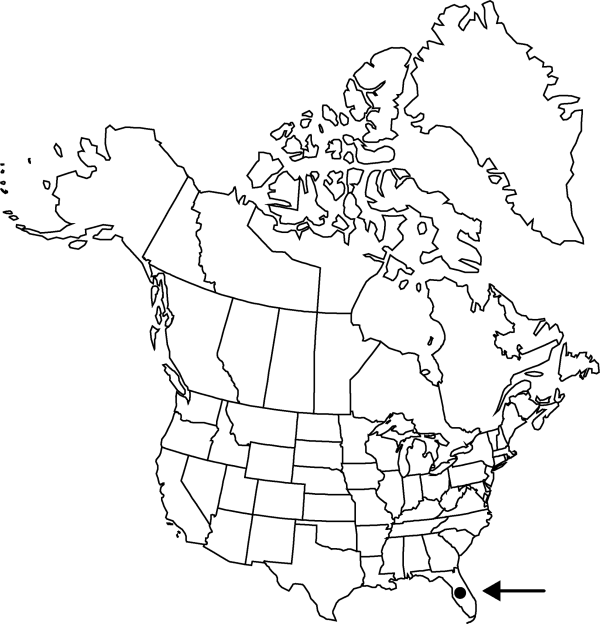Pereskia grandifolia var. grandifolia
Shrubs or trees, erect, 2–10 m. Stems to 20 cm diam., very spiny; areoles to 12 mm diam. on basal portion of stem. Leaves elliptic-oblong, 6–30 × 3–9 cm, 0.5 mm thick. Spines all alike, 1–6 per areole, straight, acicular, 1–6.5 cm. Flowers 10–50 in dense cymose-paniculate aggregations, not fragrant, 1.5–3.2 × 3–7 cm; tepals epigynous; scales and areoles in distal 1/2 of receptacles; lateral pedicels 1–3 cm; terminal flower without pedicel; perianth pink. Fruits reddish green to yellowish green, pyriform or turbinate, often nearly as broad as long, 50–100 × 30–70 mm, often proliferating. Seeds obovoid-ellipsoid, 5–7 × (3.6–)4.5–5(–5.4) mm, glossy. 2n = 22.
Phenology: Flowering not reported for Florida [year-round].
Habitat: Lowland forests
Elevation: 0-50 m
Distribution

Introduced; Fla., South America (Brazil).
Discussion
Pereskia grandifolia var. grandifolia is widespread in cultivation as an ornamental, often escaping. B. E. Leuenberger (1986) showed the species only as cultivated in Florida; however, it is reported from Highlands and Hillsborough counties, where it may now be established. At Hillsborough County, sizeable clumps were reported growing in a pasture (R. P. Wunderlin, pers. comm.).
Selected References
None.